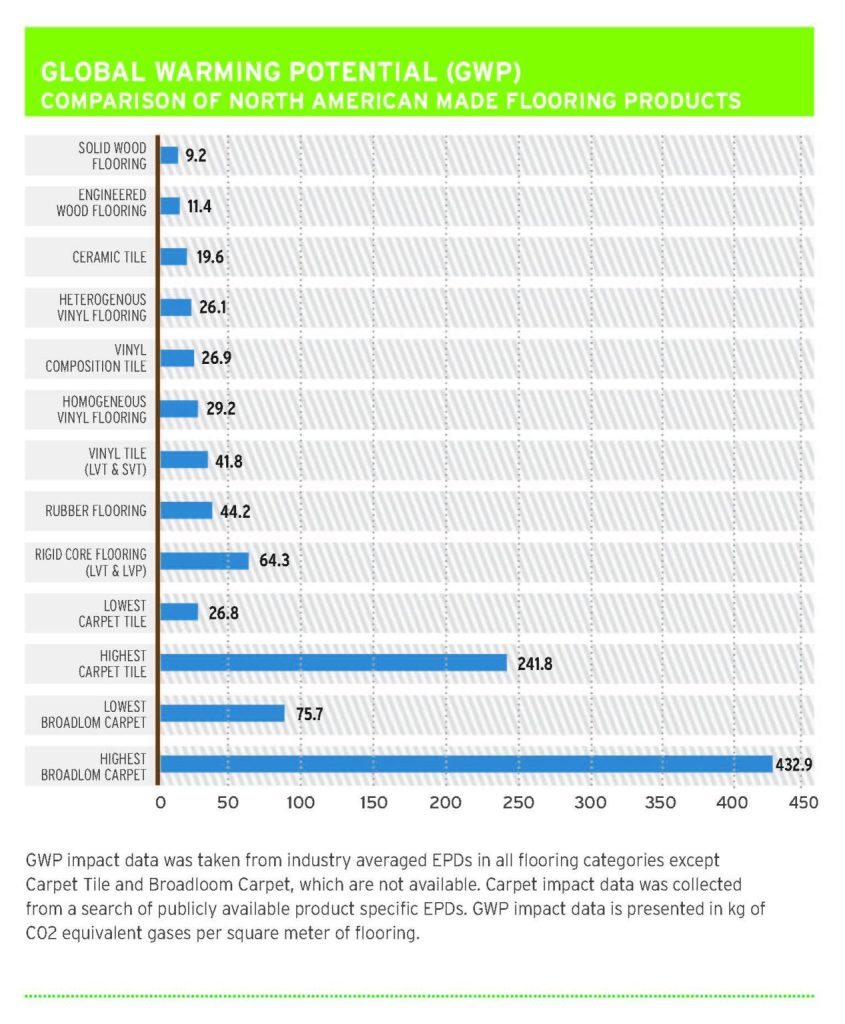For architects and designers who are looking to specify environmentally friendly flooring materials, there’s only one natural choice: real wood. And now, Environmental Product Declarations (EPDs) are available from the National Wood Flooring Association (NWFA) and the Decorative Hardwoods Association (DHA) that compare wood flooring to wood-look alternatives and other products. These resources provide insight into a product’s environmental impacts through objective, scientific data that details how a product is made and its impact on the environment throughout its entire life cycle.

EPDs allow for transparency into impact through allowing data to be digested in an accessible and comparable way. When set against all other flooring product categories that have released EPD data, solid and engineered wood flooring boasts a considerably smaller carbon footprint, or Global Warming Potential (GWP). Because EPDs are required to report impact categories such as global warming potential, ozone depletion, smog creation, and land/water pollution, companies can communicate unbiased information about products confidently.
Michael Martin, NWFA president and CEO, says that until now, flooring manufacturers have marketed their products as environmentally friendly, but concrete data to support these claims remained to be seen. “Now,” Martin says, “these tools offer a straightforward way to cut through the confusion and identify environmentally responsible, real wood flooring products that will withstand the test of time and add value to a home.”
Additionally, EPDs act as a resource for builders, architects, and specifiers to meet requirements for green building rating systems such as LEED v4.1. They also have led to the establishment of an industry benchmark that product-specific EPDs can be measured against, incentivizing manufacturers to design and build lower impact products.
For more information and to review the complete EPD results for solid and engineered wood flooring, visit NWFA.org.



